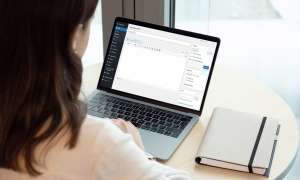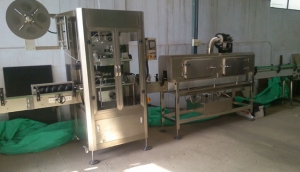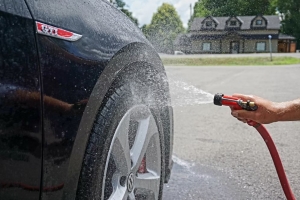Experiencing frustrating laptop issues can disrupt your workflow and cause unnecessary stress. From power problems to screen malfunctions, knowing how to address these common laptop woes can save you time and money.
By learning simple repair techniques and troubleshooting methods, you can potentially resolve these issues on your own without the need for professional assistance.
So, if you're tired of dealing with laptop troubles, stay tuned to discover practical solutions that will get your device back up and running smoothly with the help of GPK Group.
Key Takeaways
-
Check laptop battery and AC adapter functionality.
-
Troubleshoot screen issues with memory and external monitor.
-
Investigate power cycling problems with AC adapter and memory.
-
Address laptop noises by checking cooling fan and running diagnostics.
-
Resolve shutdowns and freezes by cleaning the fan and troubleshooting software.
Laptop Not Turning On
When faced with a laptop that doesn't turn on, the initial step is to check if the device is fully charged. Connect the AC adapter and confirm it's functioning by testing it with a voltmeter or using a new one.
If the laptop still doesn't power on, examine the charging port for any signs of malfunction. In case of battery drainage, try removing the battery and connecting the AC adapter directly.
If the power button fails to respond, there might be a BIOS update needed. Ultimately, if these steps don't resolve the issue, there could be a deeper problem related to the motherboard that requires professional attention.
Blank Screen Issue
To address the blank screen issue on your laptop, begin by unplugging the device and removing the battery to troubleshoot potential causes. Press and hold the power button for about 30 seconds to drain any remaining power.
Reinsert the battery, plug in the laptop, and restart it. If the screen remains blank, check the memory modules. Reseat or replace them if necessary.
Perform display troubleshooting by connecting an external monitor to your laptop to determine if the issue lies with the screen itself or other components like the graphics card.
Laptop Power Cycling
Address the issue of laptop power cycling by troubleshooting potential causes and identifying the specific components that may be causing the problem. Power cycling, where the laptop turns on and off repeatedly, can be frustrating.
Start by checking the battery draining problems and power management settings. Make sure the laptop is connected to a stable power source. Test the AC adapter and the DC jack for any faults using a voltmeter.
If the issue persists, inspect the memory modules and the motherboard for any issues. Power issues troubleshooting is critical in resolving this problem. It may also help to adjust power management settings to prevent excessive battery drain, which can lead to power cycling.
Strange Running Noises
Inspecting the cooling fan is crucial when troubleshooting unusual running noises on your laptop. If you're experiencing uncommon sounds while using your device, follow these steps:
-
Troubleshooting Steps
-
Check the cooling fan for any visible blockages like dust or debris.
-
Listen closely to identify if the noise is coming from the fan area.
-
Run a diagnostic test to verify the fan's functionality.
Remember these maintenance tips:
-
Regularly clean the cooling fan to prevent overheating issues.
-
Backup important files to avoid data loss in case the hard drive needs replacement.
-
If the noise persists after cleaning, consider replacing the hard drive to guarantee smooth operations.
Laptop Shutdown or Freezing
When encountering laptop shutdown or freezing issues, the initial step is to check for overheating as a common root cause. Troubleshooting overheating issues involves cleaning the fan and heat sink to prevent dust buildup, ensuring proper airflow.
If overheating isn't the problem, software conflicts may be causing the shutdowns or freezes. Dealing with software conflicts requires identifying any recent software installations or updates that could be causing the issue. Try uninstalling recently added programs or performing a system restore to a point before the problem occurred.
Battery Charging Problems
To troubleshoot battery charging problems on your laptop, start by checking the AC adapter plug for proper adjustment. If the plug seems fine, explore deeper into the issue by taking into account the following:
-
Charging Port Issues: Inspect the charging port for any physical damage or debris that may be obstructing a proper connection.
-
Power Adapter Troubleshooting: Test the power adapter with another device or use a voltmeter to verify it's functioning correctly.
-
Battery Calibration: Perform a battery calibration to recalibrate the battery gauge and enhance its accuracy.
If problems persist after these steps, it might be necessary to contemplate options like replacing the battery or seeking professional assistance for a more thorough evaluation.
Screen Light Failure
If your laptop is experiencing screen light failure, the first step is to check the screen inverter or backlight lamp for any issues.
Begin by inspecting the backlight for any signs of damage or malfunction. If the backlight is the problem, consider a backlight replacement to restore proper lighting to your screen.
Additionally, if you notice LED screen flickering or a dim display, the issue may lie with the inverter. Troubleshoot the inverter to determine if it's causing the screen light failure.
Screen Display Issues
Inspect your laptop screen for any display abnormalities to identify and troubleshoot potential screen display issues. If you encounter screen flickering, try these solutions:
-
Adjust the refresh rate in display settings.
-
Update graphics drivers to the latest version.
-
Check for loose or damaged cables connecting the screen.
When troubleshooting screen resolution problems:
-
Right-click on the desktop and select Display Settings.
-
Adjust the resolution to the recommended setting.
-
Verify that the graphics card supports the chosen resolution.
Keyboard Malfunction
When troubleshooting keyboard malfunctions on your laptop, begin by checking for any physical obstructions or debris beneath the keys. Sticky keys can often cause a malfunction in your keyboard.
If you spill liquid on your laptop causing water damage, immediate action is vital. Turn off your laptop, disconnect the power source, remove the battery, and let it dry completely. You can try using a hairdryer on a cool setting or silica gel packets to absorb moisture.
Once dry, reassemble your laptop and check if the keyboard functions properly. If the issue persists, you may need to replace the keyboard to repair the water damage.
Repetitive Beep Sounds
To troubleshoot repetitive beep sounds on your laptop during startup, begin by pressing the keyboard to check for any stuck keys. If that doesn't resolve the issue, you may need to explore further into the problem.
Here are some steps you can take:
-
Understand BIOS Beep Codes: Familiarize yourself with the BIOS beep codes specific to your laptop model to identify the root cause of the beeping pattern.
-
Perform Troubleshooting: Use the beep code information to troubleshoot the problem effectively and pinpoint any hardware failures.
-
Check for Motherboard Issues: If the beep sounds persist, it could indicate motherboard issues. Conduct diagnostics to determine the exact problem and seek professional assistance if needed.
Frequently Asked Questions
How Can I Protect My Laptop From Liquid Spills?
To protect your laptop from liquid spills, consider using waterproof keyboard covers. Additionally, make sure your laptop is covered by insurance to mitigate potential damage costs in case of accidents. These precautions can safeguard your device effectively.
What Should I Do if My Laptop Is Very Slow?
If your laptop is very slow, start by checking for performance issues. Troubleshoot and optimize to speed up your device. Look into software updates, memory upgrades, and background apps causing delays. Streamlining can enhance efficiency.
Is It Safe to Leave My Laptop Plugged in All the Time?
Leaving your laptop plugged in constantly can impact battery lifespan. To maintain health, unplug occasionally. Adjust power settings to prolong battery life. Monitor for overheating caused by continuous charging habits.
How Do I Prevent My Laptop From Getting Viruses?
To prevent viruses, confirm virus protection software is active, update regularly. Practice online safety; avoid suspicious links. Backup data routinely for security. Implement strong security measures, use firewalls. Be cautious when downloading. Protect your laptop from malware.
Can I Upgrade the Hardware on My Laptop Myself?
Yes, you can upgrade laptop hardware yourself. Research compatibility, gather tools, follow guides. Common upgrades include RAM, storage, and sometimes CPU. Be cautious with delicate components. Enjoy the performance boost from DIY upgrades.
Conclusion
To sum up, by following the troubleshooting steps outlined in this article, you can effectively address the most common laptop problems and guarantee smooth functionality.
Remember to check the battery, AC adapter, memory modules, cooling fan, and software updates to resolve issues such as power problems, screen malfunctions, strange noises, and freezing.
By taking proactive steps to maintain and repair your laptop, you can extend its lifespan and enhance its performance with the help of GPK Group.






